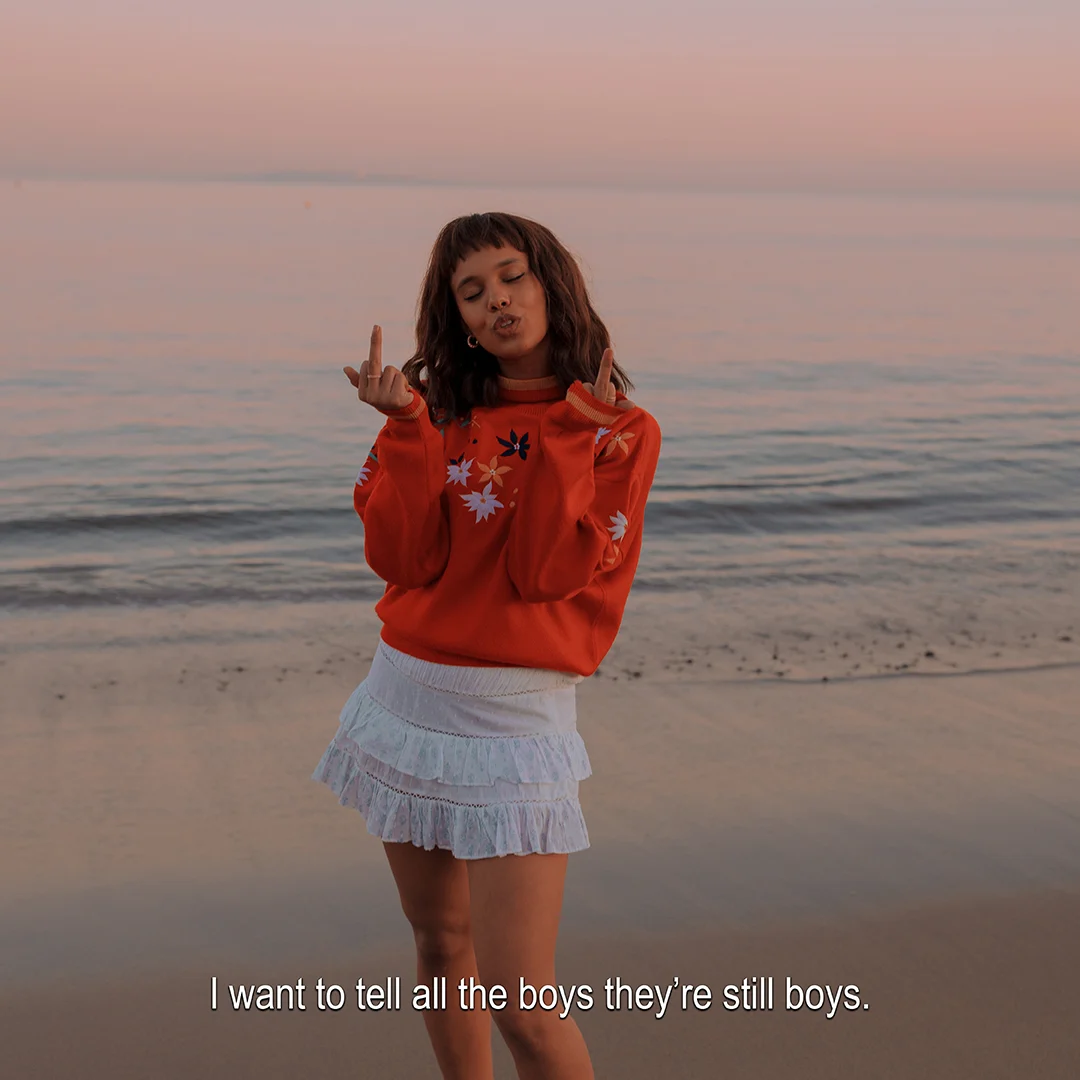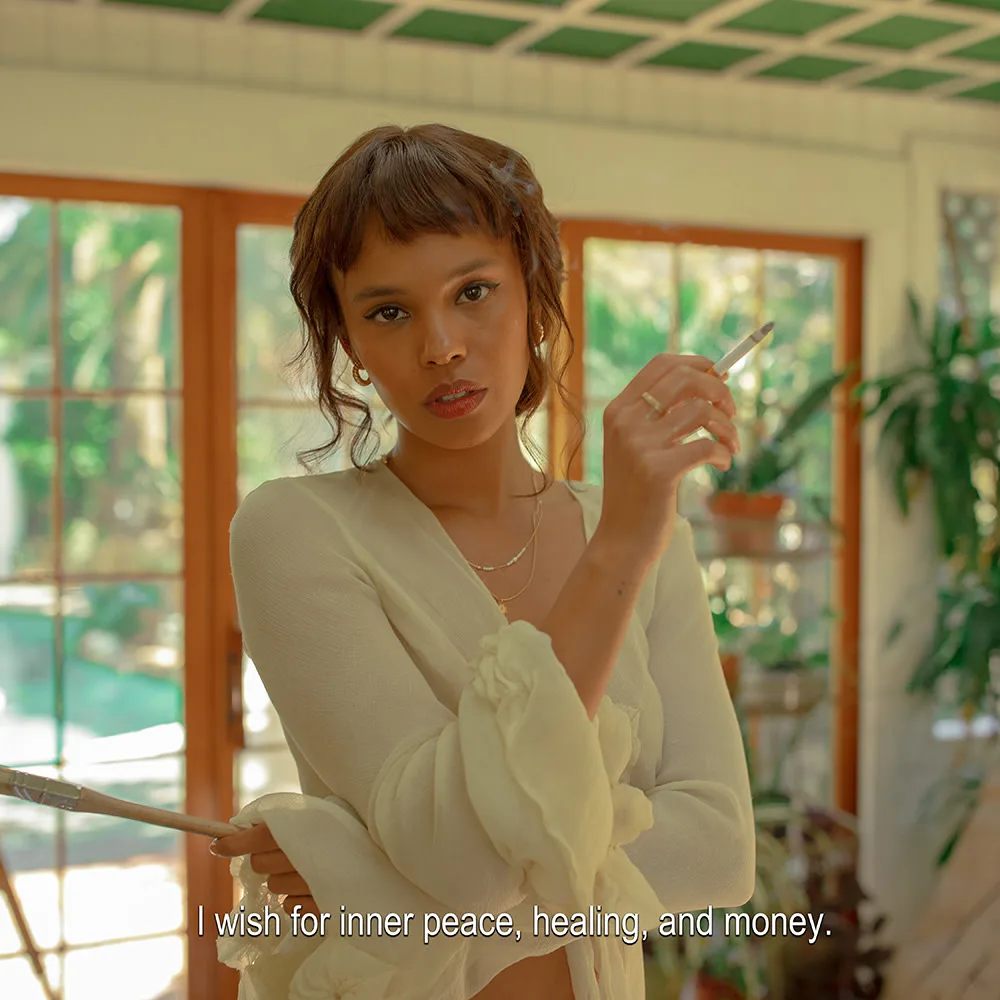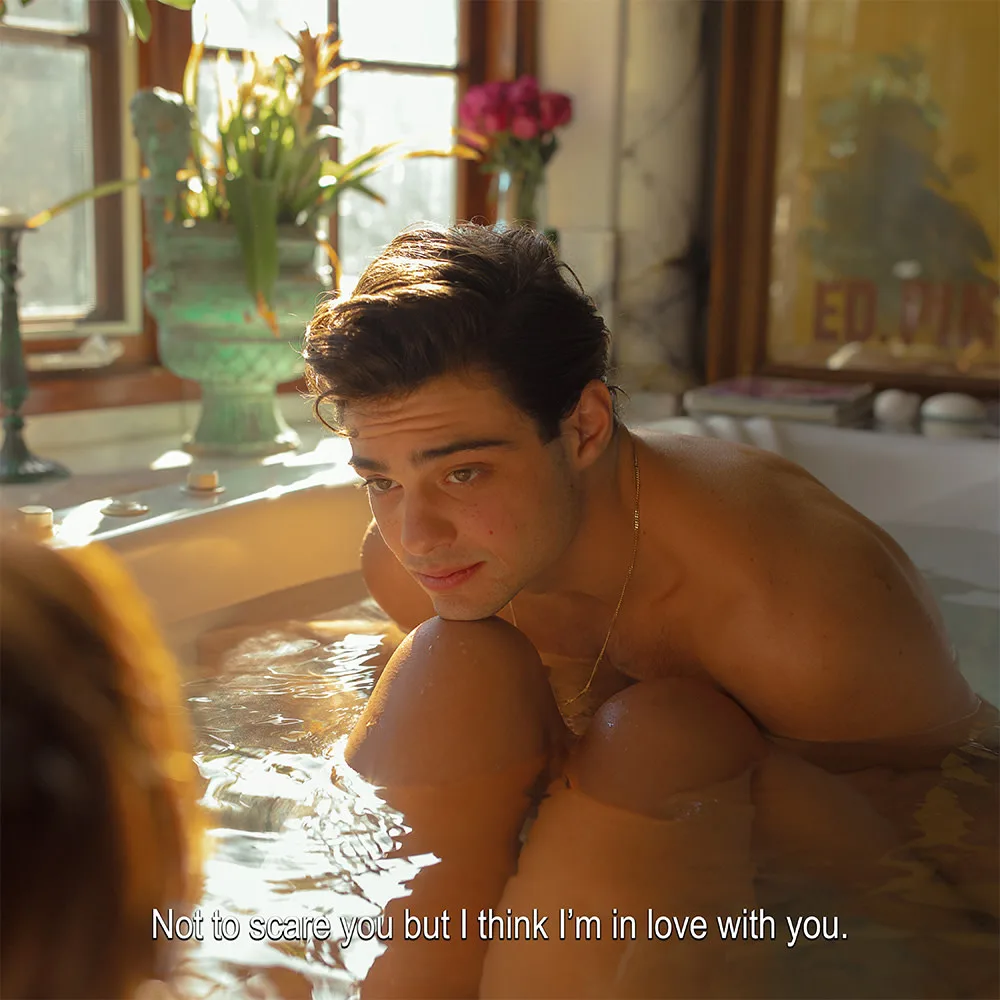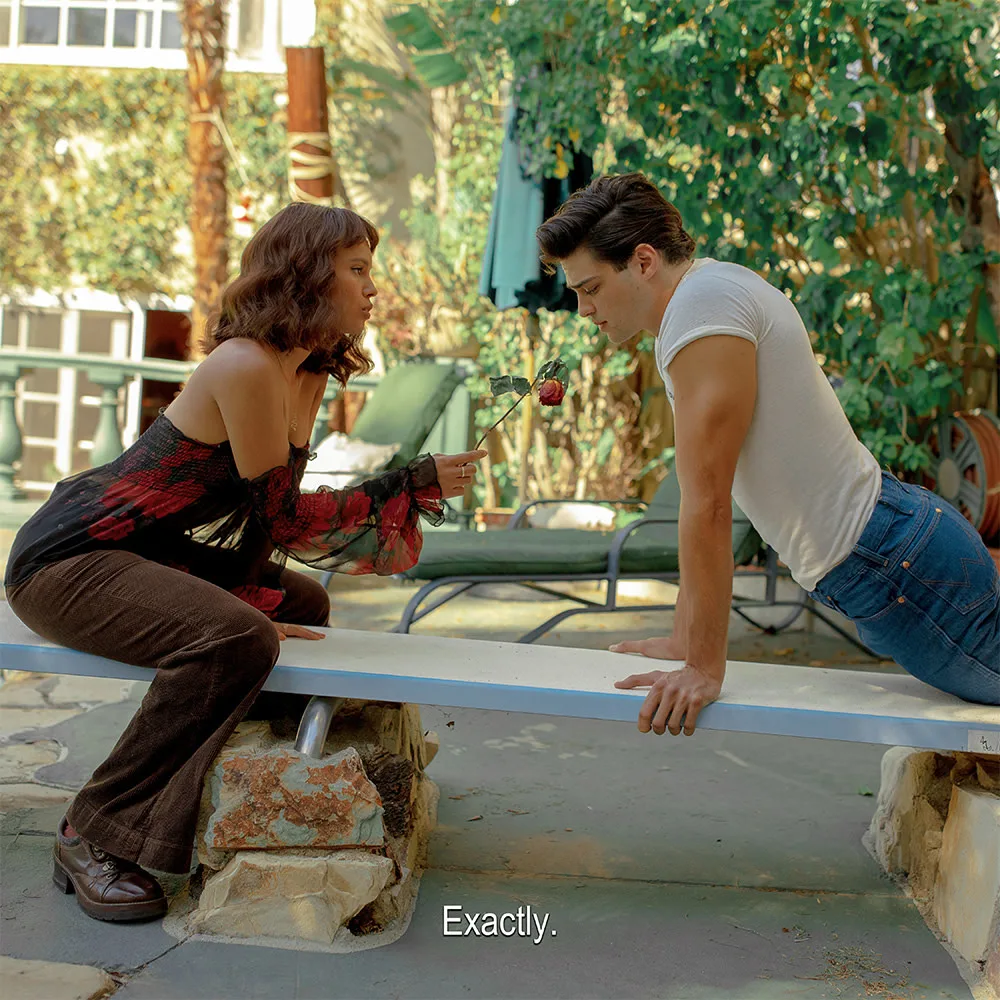


Sarah Bahbah explores heartache in our new collaboration
Why are we drawn to the people we are drawn to? That is the question at the heart of Fool Me Twice: Sarah Bahbah’s latest project, supported by WePresent. The 29-year-old Palestinian-Australian visual artist is known for her ironically sensuous visuals capturing heartbreak, abuse, pleasure, and empowerment. Sarah talks to Vera Papisova about how her own romantic experiences find their way to the core of her creative output.

Sarah Bahbah’s fans have been waiting with bated breath for an announce-ment of a new series. When new work by her “drops,” Instagram goes wild. And you can see why. Her photographs – decadent, saturated, romantic visuals accompanied by subtitle-like captions – are like stills from a classic movie, but featuring the hottest young actors of the present day.
Fool Me Twice is an admittance of shared responsibility and a promise to myself for growth

Her new series Fool Me Twice, supported by WePresent, showcases her instantly-recognisable style while simultane-ously communicating something dark and imperative to her captivated audience. These new images feature Alisha Boe, star of the Netflix drama 13 Reasons Why, and rom-com sensation Noah Centineo shot in various locations around The Brick Man or, a mansion in Los Angeles. In the images, the two actors play out a romantic story inspired by real-life experiences Sarah herself has been through. In these glossy, indulgent images, we follow the couple’s heady but ultimately ill-fated romance, and in typical Sarah Bahbah fashion, the series is narrated by captions that expose the artist’s inner musings on sex, desire, trauma, and the emotional chaos of betrayal. “Fool me twice,” she writes in the opening frame, as we see Alisha’s character kiss her boyfriend through a KN95 mask on a beach. Her guard is up, the layers of the outside world still present, and she knows she needs to be careful this time. When Noah’s character finally makes her feel safe, she shows her vulnerability, only to be rejected.


For these new images, Sarah drew on her recently acquired knowledge of attachment theory to explore this recurring theme in her own love life: the complex and often tortuous dynamic between an “anxious” partner and an “avoidant” one. “My destructive patterns draw me to people who I am incompatible with,” Sarah explains. In the series, we watch an anxious-attached woman ignore the red flags right in front of her, capturing what it feels like to be the “fool in love”, while the avoidant man stays unfazed and unattached.

“I feel like I get my heart poached once or twice a year, and with that, a series is born,” Sarah says of the inspiration behind her latest project. “I tend to wear my heart on my sleeve. I risk exposing myself to heart-break...When my anxiety around relationships is activated, my inner dialogue pours out from me line after line. Over the years, I have learned to express myself more openly to my partners, but there are still things that go left unsaid. It is mostly those lines that I can’t let go of that make it into my art.”
My attachment style alternates between anxious and secure, and I can recognize that I need intimacy, availability, and security.


Attachment theory is the work of the psychoanalyst John Bowlby, later expanded on by developmental psychologist Mary Ainsworth. It studies early human connection, specifically the relationships we have with our parents or caregivers as children, and how they shape our attachment styles in our long-term relationships moving forward. While Sarah’s series focuses on avoidant and anxious attachment styles specifically, there are four attachment patterns recognized by psychologists today – secure, anxious, avoidant, disorganized – all of which form in early childhood and can fluctuate depending on who is around and how safe we feel. But they don’t have to be a predetermined verdict on our love lives forever; through self-work and new ex-periences, they can change over time as we grow. “My attach-ment style alternates between anxious and secure, and I can recognize that I need intimacy, availability, and security,” Sarah says with candor. “I desire closeness. Looking back at my previous relationships I can now see that I have dated people who fear closeness. I can see clearly the pattern weaving my heartbroken relationships together and how this has manifested in my art.”
According to therapist Nedra Glover Tawwab, author of Set Boundaries, Find Peace, avoidant people are unable to commit because they have rigid boundaries. “Those rigid boundaries show up in relationships as emotional walls, and this is usually universal,” Tawwab explains. “It really has nothing to do with that partner in particular. The avoidant person keeps people at a distance to keep themselves safe.” Even though Sarah only recently identified attachment theory’s influence in her private life and art, this undercurrent has long been present in her work – most recently in the short film she shot for Kygo and Tina Turner’s cover of What’s Love Got to Do With It? Featuring Charles Michael Davis and Laura Harrier, the film, albeit tongue-in-cheek, shows the gruelling push-pull of such relationships. Her latest storyline, however, is shown through the lens of a totally new perspective on her love life. According to Sarah, learning about her own attachment style helped her gain a new understanding of her past relationships, making this her most self-aware project to date. “I can already see a change in my work,” she says. “Fool Me Twice is an admittance of shared responsibility and a promise to myself for growth. , I fooled myself over and over again. Now, I am releasing my heartache and confronting my behavior.”


At a time when the COVID-19 pandemic has forced people the world over to reflect on the fragilities of being human, Sarah’s latest series is calling out the two biggest social themes that should follow us into 2021: accountability and self-work. Interestingly, all of this is not necessarily obvious upon first glance. For starters, we don’t see her in the photos, rather actors in glamorous yet slightly off-kilter set-ups. Upon closer inspection, though, what we find is profoundly vulnerable: behind these hedonistic, luscious fantasies featuring luxurious backdrops and beautiful actors, lies the portrayal of something much starker: that the relationship Sarah unfolds before us is ultimately impossible and toxic.
Deep down, it’s not hard to understand why people are so obsessed with Sarah’s images. To some degree, we are all playing out romanticized and curated versions of our lives on social media, where everything looks perfect on the surface – until we look closer and realize that the world is on fire, and with it so are many of our relationships. But as Sarah’s work reassures us: none of us are alone in our secret struggles.
